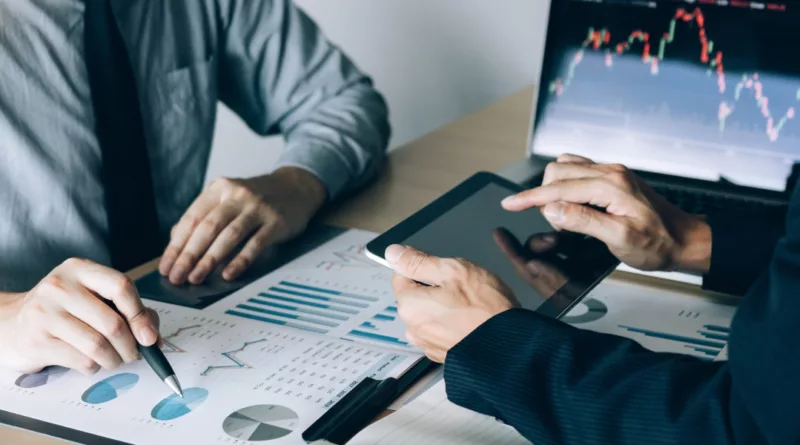Investment is a journey marked by various stages, each representing a crucial milestone in the process of wealth creation and financial growth. From the initial exploration of opportunities to the final realization of returns, investors navigate a series of steps that require careful planning, analysis, and decision-making. Understanding the stages of investment is essential for both novice and experienced investors, as it provides a roadmap for achieving long-term financial objectives and mitigating risks along the way. In this discussion, we will explore the key stages of the investment journey, from the identification of investment opportunities to the evaluation of performance and the realization of profits.
Distinguish between investors depending on the stage of development of the company allows to fully understand the investment chain. Here are the key elements that will help you understand when each of these actors is involved.
You read in the media that some companies become unicorns, and raise millions. But what is the process to win over investors. A few clarifications.
Reminder about the different legal structures
First, there is the private investors who are natural persons. These are the people that you call when your campaigns, crowdfunding and Business Angel. We also speak sometimes of family offices. There are also venture capital firms so-called (SCR) which are most often regional. Then there are the larger structures that can be specialized in start-up capital, the Mutual Fund at Risk (FCPR), Fonds Commun de Placement dans l’innovation (FCPI) and the Proximity Investment Fund(PIF) or funds managed by a management company ad hoc. Finally, the funds related to industrial so-called “corporate ventures” participating in the financing.
Seed capital
The seed capital is one of the first sources of financing of the company. It represents the funds that are needed at the start of the activity, even sometimes just a prototype does not exist. We talk about seed capital, as the company does not or no turnover. You can request this prior to the proof-of-concept will be effective. Investors are particularly at risk their capital because you have little or no history, and your visibility is very low. This is the Bpifrance via its ready boot that fits in the own funds, Business Angels, funds, regional institutional and rare seed funds, the more often scoped. The actors remain rare at this stage of funding. The goal is to raise funds in the range of 100 k€ à1M€.
The capital post-creation
It happens at the beginning of the placing on the market, at the time of the first and not the company at commercial level. The company has not yet achieved profitability and the funds are used to develop your sales force or your first marketing campaigns. They intervene to help you consolidate, strengthen the efforts of R&D and structure your approach to business. You must already have the validation of your concept. These are the same actors for the seed capital even if you can add some venture capital funds, institutional national and a few “corporate venture” that often occur on particular issues. Raising funds range between 100 k€, up to a few million euros. The company generates a turnover of between € 0 and€ 1 Million. It should be noted that in some areas, the achievement of sales is not necessary.
The capital development
It is used in the majority of cases to fund the growth of the company and allows its acceleration. The company generates revenue and profits. She wants to then accelerate, and uses it to rapidly gain market share or to launch new products, to increase the production capacity or to develop internationally. The funds raised are then in excess of € 1 MILLION and related primarily to capital fund-institutional development of national as well as some of the SCR region.
If the investment is done through several rounds, one speaks of series A and series B. The amounts when one uses the term B-series is rarely below of several million euros to go up to a few hundreds of millions of euros. In this latter case, we are dealing with startups that are exceptional and who could prove that they could industrialize their growth. Their number is very low.
Capital transmission
The capital-transmission corresponds to a specific stage corresponding to the disposal/recovery of a business. If it is a buy one speaks of Leverage Buy Out (LBO). They are used to buy a company through a holding company created specifically. It generates an effect of financial leverage by creating, in general, a bank debt and equity investments. Funds specializing in this field are aimed almost exclusively to companies in highly mature markets with high growth or constant. They invest in companies with good visibility and, the profitability of which is not proven.
The ipo
We rarely talk about it in the sources of financing because it is the final stage. The initial public offering, or IPO (“Initial Purchage Offering”) remains one of the techniques used by large companies who wish to have more funds for their development.
By following a systematic approach that encompasses exploration, analysis, decision-making, implementation, and evaluation, investors can enhance their chances of success and minimize the impact of market volatility and uncertainty. Furthermore, understanding the stages of investment empowers investors to make informed decisions, adapt to changing market conditions, and achieve their long-term financial goals. As investors continue to navigate the ever-evolving landscape of investment opportunities, a clear understanding of the stages of investment will remain essential for building wealth and securing financial independence.








